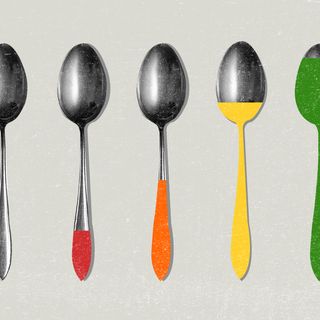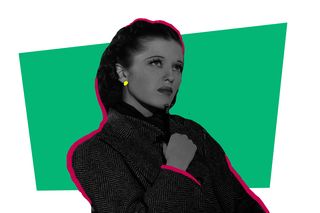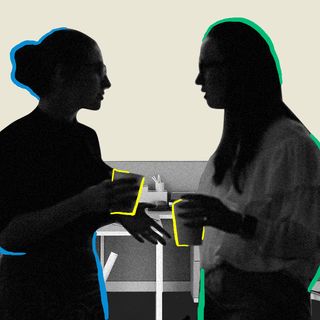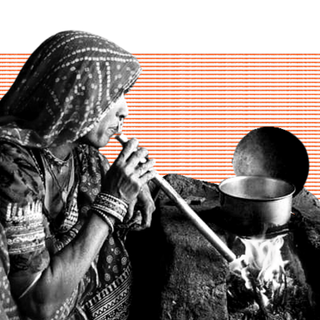
Why We Indulge in ‘What If’ Scenarios
Engaging in ‘counterfactual thinking’ can help people learn from mistakes, prepare for the future, or even appreciate what they have.

What isn’t, but what could have been, has an enduring appeal to human imagination. What if the Covid19 pandemic hadn’t shifted our reality? What if I had actually ventured out on the road more traveled? What if the Titanic hadn’t hit that iceberg? Even cinema has dwelled on this appeal — think “13 Going on 30” or Marvel’s “What If…?” To think of the limitless, fascinating possibilities and hypothetical scenarios, how a twist in one’s tale could have had a ripple effect through time fascinates humans endlessly.
What if. If only. What might have been. The psychology behind what is officially called “counterfactual thinking” is layered. People unconsciously and pervasively create alternate scenarios to things that have already occurred, contrary to what actually happened. The result is people visualize two possibilities: the reality and counterfactual alternatives to it. They are a “common feature of our conscious mental landscape,” experts note.
But why does our mind harken back to the past, knowing it can’t be changed? Perhaps, the most obvious motivation is that humans are inherently risk-averse. In order to avoid facing the reality of an unpleasant situation, people engage in counterfactual thoughts — think of the million ways they could have evaded a moment in time — as a coping mechanism. Whensomeone is in an accident, the initial thoughts might be about how different things would have been having they taken another road or paid more attention. This enables a “perception of predictability” — allowing people to feel more in control of a situation. Living in the here and now, at peace with our actual lives, is always harder.
People also tend to engage in counterfactual thinking because of the desire to correct the mistakes they might have made — how by taking another path in the future, they could avoid the undesired outcome. This relates to the idea of “behavior intention,” where we use counterfactual thoughts to change our future behavior positively. This can involve making a change in our behavior immediately after the negative event occurred. For instance, if someone fails an exam or loses a match, their counterfactual thinking is activated, allowing them to think of ways they could have achieved their goal and further motivating them to perform better in the future.
Besides these “preparatory” functions, counterfactual thinking also serves a more “affective” purpose. It allows people to navigate inevitable emotions such as regret, envy, relief, guilt, satisfaction, or even grief. This is what psychologist Tykocinski called “retroactive pessimism” — whereby counterfactual thinking allows people to come to terms with trauma or disappointment by focusing on the inevitability of the event, that the outcome was in fact inescapable.
A study showed how regret and envy are often motivated by the counterfactual thinking of what would have happened had we made a different choice. For author Joan Didion, for instance, the first thing that came to her mind after her husband’s death was: what if the seconds leading up to the incident were different? Since events of the past can’t be changed, this works to help people feel marginally better.
Related on The Swaddle:
Why We Expect So Much of Each New Year — and Every January Feels Like a Letdown
A more instinctive, core answer to our tendency to flesh out unlived realities, is that as humans, we just can’t accept the way things are. This could have something to do with an inherent dissonance about our self-understanding, according to philosopher Charles Taylor. “Subjectivity and objectivity both grew more intense and converged,” Joshua Rothman noted in The New Yorker; in the end, “we came to feel that our lives, pictured from the outside, failed to reflect the vibrancy within.”
Interestingly, psychologist Andrew H. Miller wrote in “On Not Being Someone Else: Tales of Our Unled Lives” that the propensity to fantasize about unlived scenarios increases in a fast-paced, capitalist world. Which makes sense in the context of the isolation of individuals, coupled with the hyperspeed of opportunities and choices, multiplies alternative, desired realities.
“The elevation of choice as an absolute good, the experience of chance as a strange affront, the increasing number of exciting, stultifying decisions we must make, the review of the past to improve future outcomes”—all these “feed the people we’re not.”
Interestingly, counterfactual thinking manifests in different ways: it could be upward or downward. Upward counterfactual thinking involves constantly thinking about what could have been and is generally linked to pessimistic tendencies. Asking oneself a version of “What if something terrible happens?” or “What if it all goes wrong?” invites worry and anxiety about low-probability but high-consequence possibilities.
Of course, this can also inspire motivation and action and encourage people to do better; but more often than not, it devolvesinto a spiral of anxiety and constant dissatisfaction. It could go either way: for instance, if you bombed an exam, you could either come out thinking you will study harder and better or retire to bed for a night of wallowing. As American poet John Greenleaf Whittier wrote in a poem: “For of all sad words of tongue or pen, the saddest are these: ‘It might have been.'”
In relationships, upward counterfactual thinking corresponds with relatively low levels of relationship satisfaction, according to a 2016 study.
But in some ways, counterfactual thinking can be good too. Called “downward” counterfactual thinking, the “what if” can also help people see the silver lining. You know, the “count your blessings, all’s for the best” kind of mentality. Thinking about how things could have turned out worse but they didn’t allow for a sense of relief. Not all unrealized possibilities have to be better and tempting; some inspire mindfulness and appreciation for what one has at this moment. This also helps in changing behavior and even “weaving a tapestry of meaning” in a person’s life, a researcher noted.
Related on The Swaddle:
All You Need To Know About Maladaptive Daydreaming
For example, after getting into a car accident, when somebody thinks “At least I wasn’t speeding, then my car would have been totaled.” Again, in a relationship setting, downward counterfactual thinking in relationships was associated with relatively positive outcomes, allowing room for more relationship satisfaction.
“Like facets in a jewel, such moments seem to put our lives into prismatic relief. They make us feel the precariousness and the specificity of the way things are,” Rothman added.
Last year, experts explored counterfactual thinking in sports. People were happy to have won bronze medals, “but that bronze medalist, they’re actually forming a downward comparison. And they’re thinking, at least I’m not that fourth-place finisher. At least I’m not that person who didn’t even earn a medal,” researchers noted in a study.
Some experts even call this an essential component of effective social functioning and credit it for inspiring creative detours. “…they encourage our minds to roam where they otherwise would not have gone,” Psychology noted.
Some choices may be better, but dwelling on those needs some caution because as the wisdom goes, life only moves forward; other versions may crop up as detours, or even silhouettes, of the past and the future. But that’s exactly what they are: versions of reality, not reality itself.
In his book “The Book of Why: The New Science of Cause and Effect,” Judea Pearl theorized the function of a “Ladder of Causation,” marked by observation, intervention, and imagining — with imagining being counterfactual thinking. “Imagining what might have been is both a ‘gift’ and a ‘curse,'” Pearl noted, “and distinguishes humans from all other creatures.”
The idea of “what if” feeds a different world — it can be better or worse depending on the choices, the severity, the stakes involved. At any given point, there are two realities: the possible world and the impossible world. The latter roars with infinite possibilities and changes, constantly and persistently. How closely we look at it, and allow it to change us, is an exchange that will keep playing out in the backdrop.
“Sometimes I remind myself that I almost skipped the party, that I almost went to a different college, that the whim of a minute could have changed everything and everyone,” author Anna Quindlen reflects. “Our lives, so settled, so specific, are built on happenstance.”
Saumya Kalia is an Associate Editor at The Swaddle. Her journalism and writing explore issues of social justice, digital sub-cultures, media ecosystem, literature, and memory as they cut across socio-cultural periods. You can reach her at @Saumya_Kalia.
Related


Quick Chats, Interruptions at Work Help Create a Sense of Belonging: Study
